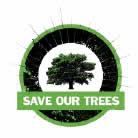Along with the eager anticipation of the upcoming holidays, comes many calls to the LSU AgCenter's Extension office regarding citrus production in home gardens.
The strong interest in citrus production stems from the fact that it's been several years since we have had hard, extended freezes that are capable of severely damaging or killing citrus trees. This has accounted for the increasing number of trees that are producing fruit. Even though the biggest threat to citrus trees in Louisiana is freezing temperatures, here in South Louisiana we enjoy the ability to produce a variety of citrus fruit compared to our neighbors in the northern part of the state.
The first question that should be asked before deciding what type of citrus to plant is which types are the most cold hardy. Generally speaking, lemons and limes are the least cold hardy. Most of us can remember kumquat trees being around as we grew up; they are the most cold hardy, followed by satsumas, sweet oranges, grapefruit, and finally lemons and limes. As I mentioned earlier, even though it has been several years since we have experienced temperatures low enough to damage trees, we know that sooner or later it's going to happen. Part of the decision when planting citrus is that once planted, eventually freezing temperatures will damage or kill trees. Two varieties of kumquats are planted, one being Nagami (oblong, tart) and the other, Meiwa (round, sweet). If planting satsumas, choose from Brown's Select (which ripens mid-October), Owari (which ripens mid-November) or Armstrong Early (which ripens from late-September through October). For sweet oranges, choose between Washington Navel, Louisiana Sweet, or Hamlin Sweet. More Blood Oranges (so named because of red pigment in the flesh) should also be considered. For grapefruit, choose the popular Ruby Red (the which matures in December) and Rio Red (which matures in early November). Grapefruit can be kept on the tree until May and still maintain good quality. Since freezing temperatures in November and December has the potential to be more damaging than freezes in February, many people prefer to wait to make new plantings until mid to late January or February. Early freezes can cause more damage to trees that have not been sufficiently harden by exposure to cold temperatures than trees that have been hardened by a month or so of cold temperatures. Some factors that determine the extent of damage to citrus trees exposed to freezing temperatures are as follows:
- the actual temperature reached
- the duration of time of the freeze
- the timing of the freeze
- the age and health of the trees
Older trees in good health will suffer less damage than younger trees or trees that are stressed by diseased.
Let me add that there is a difference between fruit damage and damage to leaf and wood tissue. Trees that are loaded with fruit, regardless of type of citrus, can easily be damaged by several hours of 26-to-28-degree temperatures. If you have trees that have mature fruit and the temperature is predicted to fall to 28 degrees or below for several hours, it may be good idea to harvest as much fruit as possible.
As far protecting the trees themselves, the LSU AgCenter's research shows that trees that are grown with bare ground underneath them generally have a greater degree of survivability that those grown with grass. It is believed that on sunny days, bare ground absorbs heat during the day and releases it after dark, possibly lessening the damage. The other recommendation is to cover the entire plant allowing the cover to extend all the way to the ground. Adding Christmas lights beneath the cover can provide added protection. Be sure to remove the cover the next morning. Remember that despite the threat from freezing temperatures on citrus, it is a fruit species that is considered to be fairly easy to grow and also provides tasty and nutritious fruit.









 RSS Feed
RSS Feed